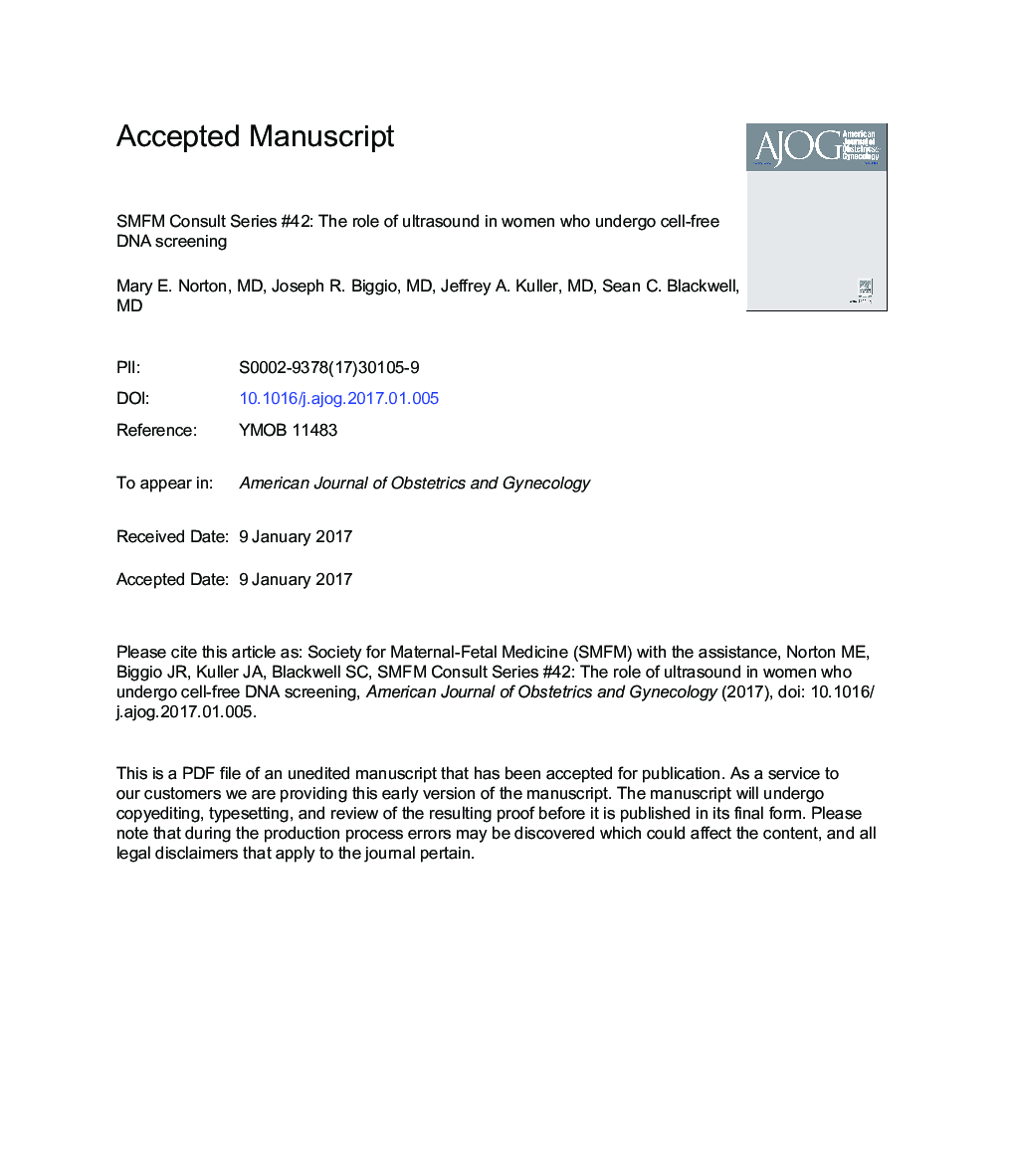| Article ID | Journal | Published Year | Pages | File Type |
|---|---|---|---|---|
| 5676282 | American Journal of Obstetrics and Gynecology | 2017 | 21 Pages |
Abstract
The introduction of cell-free DNA screening for aneuploidy into obstetric practice in 2011 revolutionized the strategies utilized for prenatal testing. The purpose of this document is to review the current data on the role of ultrasound in women who have undergone or are considering cell-free DNA screening. The following are Society for Maternal-Fetal Medicine recommendations: (1) in women who have already received a negative cell-free DNA screening result, ultrasound at 11-14 weeks of gestation solely for the purpose of nuchal translucency measurement (Current Procedural Terminology code 76813) is not recommended (GRADE 1B); (2) diagnostic testing should not be recommended to patients solely for the indication of an isolated soft marker in the setting of a negative cell-free DNA screen (GRADE 2B); (3) in women with an isolated soft marker that has no other clinical implications (ie, choroid plexus cyst or echogenic intracardiac focus) and a negative cell-free DNA screen, we recommend describing the finding as not clinically significant or as a normal variant (GRADE 2B); (4) in women with an isolated soft marker without other clinical implications (ie, choroid plexus cyst or echogenic intracardiac focus) and a negative first- or second-trimester screening result, we recommend describing the finding as not clinically significant or as a normal variant (GRADE 2B); (5) all women in whom a structural abnormality is identified by ultrasound should be offered diagnostic testing with chromosomal microarray (GRADE 1A); and (6) routine screening for microdeletions with cell-free DNA is not recommended (GRADE 1B).
Keywords
Related Topics
Health Sciences
Medicine and Dentistry
Medicine and Dentistry (General)
Authors
Society for Maternal-Fetal Medicine (SMFM) Society for Maternal-Fetal Medicine (SMFM), Mary E. MD, Joseph R. MD, Jeffrey A. MD, Sean C. MD,
